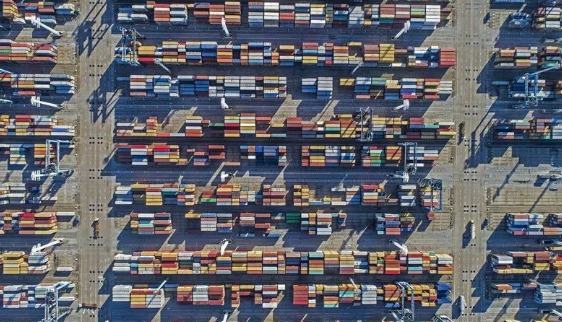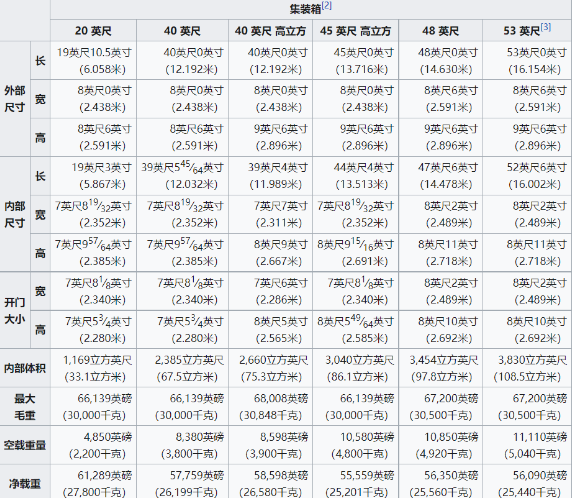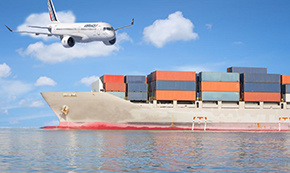Do foreign trade, how can not understand the container? Super full knowledge summary!
Categories:
Time of issue:
2024-09-13 18:16

1, large cabinet, small cabinet, double back refers?
(1) Large cabinets generally refer to 40-foot containers, usually 40GP and 40HQ. 45-foot containers are generally considered to beSpecial cabinet.
(2) Small cabinets generally refer to 20-foot containers, usually 20GP.
(3) Double back refers to two small cabinets of 20 feet. For example, a trailer pulls two 20-foot small cabinets at the same time; when the port is hoisted, two 20-foot containers are hoisted onto the ship at one time.
2. LCL means? What about the whole case?
(1) LCL (Less than Container Load) refers to a container with multiple cargo owners of goods, packed less than a full box of small quantities of goods is LCL, in accordance with the LCL (LCL-LCL) to operate.
(2) Full container (Full Container Load) refers to a container with only one owner or manufacturer of goods, can fill one or more full boxes of larger quantities of goods is the whole box of goods, in accordance with the whole box of goods (FCL-FCL) to operate.
3. What are the common specifications of containers?
(1)40-foot high cabinet (40HC):40 feet long and 9 feet 6 inches high; About 12.192 meters long, 2.9 meters high and 2.35 meters wide, generally loading about 68CBM.
(2)40-foot general cabinet (40GP):40 feet long and 8 feet 6 inches high; About 12.192 meters long, 2.6 meters high and 2.35 meters wide, generally loaded about 58CBM.
(3)20-foot general cabinet (20GP):20 feet long and 8 feet 6 inches high; About 6.096 meters long, 2.6 meters high and 2.35 meters wide, it is generally loaded with about 28CBM.
(4)45-foot high cabinet (45HC):45 feet long and 9 feet 6 inches high; About 13.716 meters long, 2.9 meters high and 2.35 meters wide, generally loaded about 75CBM.

4. What is the difference between a high cabinet and a general cabinet?
The high cabinet is 1 foot higher than the general cabinet (one foot equals 30.44cm). Regardless of the high cabinet or the general cabinet, the length and width are the same.
5. What about the weight of the box? What about the heavy box?
(1) Box weight: the weight of the box itself. 20GP has a weight of about 1.7 tons and 40GP has a weight of about 3.4 tons.
(2) Heavy box: refers to the box filled with goods, as opposed to empty/kitty.
6, empty box or Ji box refers?
Unloaded boxes are called empty boxes. In South China, especially in Guangdong and Hong Kong, empty boxes are usually called auspicious boxes, because in Cantonese, empty and fierce are the same, unlucky, so South China is not called empty boxes, called auspicious boxes. The so-called Tiji is still heavy, that is, to extract the empty box, pull it to load the goods, and then return the heavy box that has been loaded.
7. What is a heavy box? What about a heavy box?
(1) Back heavy box: refers to the back heavy box at the station to the manufacturer or logistics warehouse for unloading (generally refers to import).
(2) heavy box: refers to the factory or logistics warehouse after loading the heavy box back to the station (generally pointed out the mouth).
8, back empty box refers to? empty box refers?
(1) Back empty box: refers to the back empty box at the station to the manufacturer or logistics warehouse for loading (usually pointing out the port).
(2) Empty box: refers to the factory or logistics warehouse after unloading the goods to the station drop box (usually refers to the import).
9. What box type does DC represent?
DC refers to dry containers (Dry Container),20GP, 40GP, 40HQ and other cabinets are dry containers.
10. What box type does OT represent?
OT is short for Open Top, which refersOpen-top cabinetThat is, there is no box top only a tent on the top of the box cabinet.
11, half open?
Half-side open container.
12, bill of lading number refers?
Usually the freight forwarder gives you the number of the back box, may be the owner's single (MBL) single number, may also be the freight forwarder (HBL) single number, generally according to the ship name/voyage and bill of lading number to back the box, that is, to extract empty or heavy box.
13, box number/cabinet number refers?
Refers to the number of the container, which is unique in the world and consists of four letters and seven numbers, of which the first three letters are the owner's (shipping company or chartering company) code, the fourth letter is U, the next six numbers are the serial number, and the last number is the check code. The box number is usually asked for by the driver, because the driver goes to pick up the box before he knows the box number, and the box number is used when making customs declarations, making orders, and entering warehouse receipts.
14, lead seal number refers?
It refers to the number of the seal that locks the container door. The lead seal is generally provided by the shipping company and needs to be purchased, usually one in 50 yuan.
15, export goods refers?
Back empty containers at the station to the manufacturer or logistics warehouse for loading, and then declare for export.
16, import goods refers?
Is the import customs clearance, in the station back heavy box to the manufacturer or designated place unloading.
17, empty driving means?
Refers to the empty container pulled back to the station after the car arrived at the manufacturer or logistics warehouse and could not be loaded for various reasons.
18, reverse box refers?
Refers to pulling boxes from one station to another at a station, or not taking boxes from top to bottom, but removing the boxes above and extracting the boxes pressed below. Specify box number orCustoms InspectionThis situation is more likely to occur.
19, container station refers?
It usually refers to the place where boxes are stacked and managed on or near the wharf. The driver's back box usually goes to the station. There is a corresponding one calleddepot receiptThe transfer of containers between the station and the driver is handled by the station receipt.
20. What is usually on the bill of lading?
The contents of the bill of lading generally include the number of the bill of lading, the name of the ship, the weight of the box, the description of the goods, the number of pieces, the gross weight, the volume, the number of boxes, the issuer and the signature.
21, what should be paid attention to when shipping?
Tell the car owner whether to export or import, the type of box, the quantity of the box, the weight of the goods, the location, the station, whether to agree, the time to the manufacturer, the special requirements of the box, etc.
22. What problems should be paid attention to when writing the dispatch list?
It should be written as clearly as possible, because some drivers do not know English letters at all. The name of the ship, voyage, bill of lading number, station, arrival time, manufacturer's address, contact number, special requirements for boxes and special requirements of the manufacturer must be clearly written. If there is an invoice header, write it clearly, and don't let the driver make the wrong header.
In addition, we should also write down the problems that should be paid attention to. For example, some goods are particularly strict with the cabinet, so we must make it clear to the driver so as not to make it clear to the driver when the expenses are incurred.
23, equipment handover order refers?
When exporting the box, you must first make a list, and then get a multi-copy "Equipment Handover Sheet". The driver can use this equipment handover sheet to carry the box, leave the station, enter the station and return the box.
24. What time does the exit box yard station arrive?
It is usually 10 o'clock, but there is usually no one at the place where the order is made at 9 o'clock, so the import job must be sent back around 8 o'clock, because the driver has to drop the box first.
25, overload refers to? overweight?
(1) Overloading: generally refers to the tonnage of goods loaded on the vehicle exceeds the limit weight of the vehicle;
(2) Overweight: generally means that the tonnage of the goods loaded exceeds the limit weight of the container.
26, packing and unpacking refers?
(1) Packing (loading) is carrying empty boxes to load goods.
(2) Unpacking (unloading) is carrying heavy boxes to the manufacturer for unloading.
27, to return to mean?
It refers to pulling the goods to go and then pulling the goods back, not returning empty, not driving empty.
28, heavy charge refers?
The "weight charge" at the high-speed toll gate refers to the toll charged according to the weight and tonnage of the vehicle.
29, loss box fee refers?
Refers to the cost incurred when the imported box is found to be damaged after unloading.
30, washing fee refers?
Refers to the discovery of unclean boxes and the resulting washing costs.










